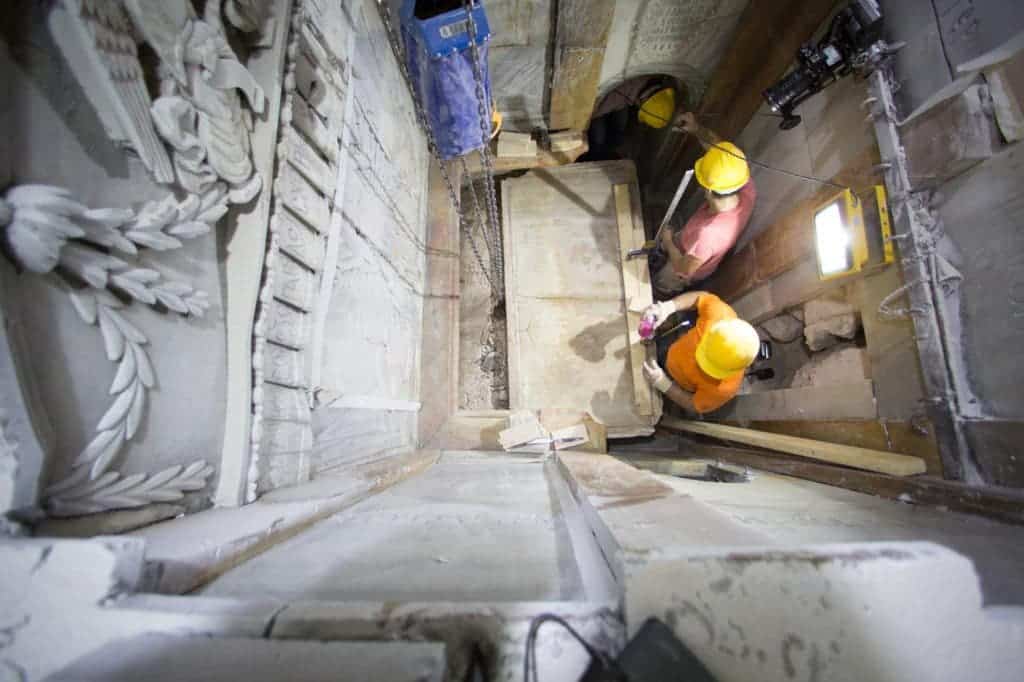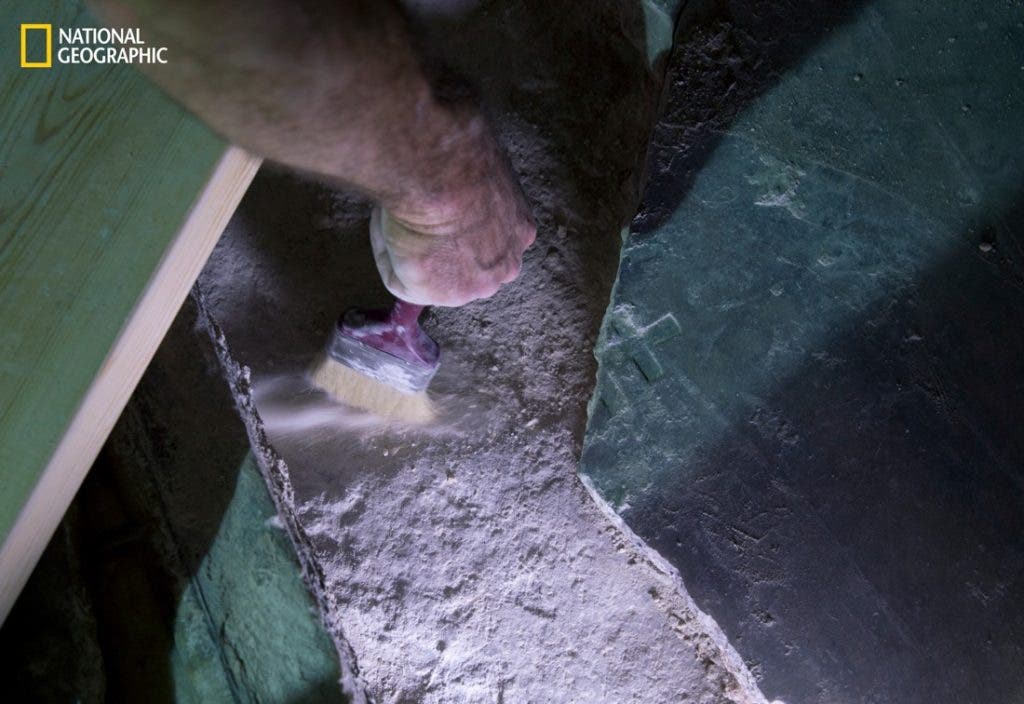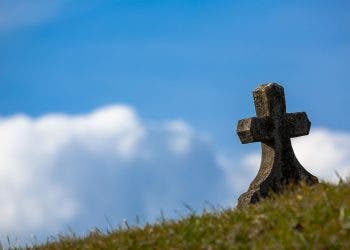
At the Church of the Holy Sepulchre in the Old City of Jerusalem, conservators carefully excavated the tomb which is thought to belong to Jesus Christ. Since at least 1,555 AD, the tomb has been completely sealed off, and for many other centuries earlier, most likely.
Inside, the mixed bunch of researchers, conservation experts, and clerics discovered a marble casing with a cross carved into it, which likely dates from the Crusader era. Then, excavating further, they also came across the original rock wall of the tomb.
“It will be a long scientific analysis, but we will finally be able to see the original rock surface on which, according to tradition, the body of Christ was laid,” said Fredrik Hiebert, archaeologist-in-residence at the National Geographic Society.
“I’m absolutely amazed. My knees are shaking a little bit because I wasn’t expecting this,” he told Nation Geographic which partially funded the expedition and was also the first to break the story.
A holy tomb

Sometime between 30 and 33 A.D., Jesus’ crucified corpse is said to have been laid on a ‘burial bed’ sculpted from the side of a limestone cave. According to the Bible, the cave was sealed off by a boulder but when a group of women came to anoint Christ’s body three days after he was buried, there were no remains to be found — he had resurrected, Christian faith has us believe.
For centuries afterward, there are no records of Jesus’ tomb. The mist starts fading in 326 A.D. when Helena, the mother of the Christian Roman emperor Constantine, asked the locals in Jerusalem to guide her to the tomb of Jesus Christ. Christian tradition says that she ordered excavations be made around a limestone cave around which 1st and 2nd centuries graves were dispersed. She and company not only got inside the cave, but found three crosses and iron nails.
Now that she had found the holy burial place of Jesus Christ, Helena, later joined by Constantine, got to work. They first ordered a pagan temple to be torn down because it was resting atop the site, then they had the roof of the cave removed and a new shrine built over the tomb for all people of the faith to come and pay their respects. Then and now, this shrine is known as the Holy Edicule. Around that time, the first stones of the Church of the Holy Sepulchre were also laid.
Since then, the shrine had gone through various periods of destruction and restoration. In 1,555 A.D., a marble cladding was put over the original limestone to protect it from people who constantly came and chopped parts of the cave. Then, between 1808-1810 the Edicule had to be restored again after a huge fire destroyed it — it’s been very much off limits since.
For the last sixty years, scientists have been trying to convince the six sects that manage the Church of the Holy Sepulchre — the Greek Orthodox Church, the Roman Catholic Church, the Armenian Orthodox Church, the Syriac Church, the Egyptian Copts and the Ethiopian Orthodox Church — to let them on the site and start excavating. It took a long time and a lot of convincing, but eventually scientists from the National Technical University of Athens were given the O.K.
They opened the marble cladding that had kept Christ’s tomb seal for nearly 500 years and found a layer of loose fill material. After they removed the material, they found one last layer of marble and, finally, the original limestone bedrock.
“We can’t say 100 percent, but it appears to be visible proof that the location of the tomb has not shifted through time, something that scientists and historians have wondered for decades,” Hiebert said.
Having the original burial bed exposed, researchers can now perform all sorts of studies of what can only be considered the most sacred of all Christian sites. For instance, by analyzing the rocks inside, scientists will be able to determine the original form of the tomb chamber. They should also be able to tell which material was deposited later, like in the time of Helena, and re-construct the Holy Edicle as it looked centuries ago.
“We are at the critical moment for rehabilitating the Edicule,” said Professor Antonia Moropoulou from the National Technical University of Athens. “The techniques we’re using to document this unique monument will enable the world to study our findings as if they themselves were in the tomb of Christ.






